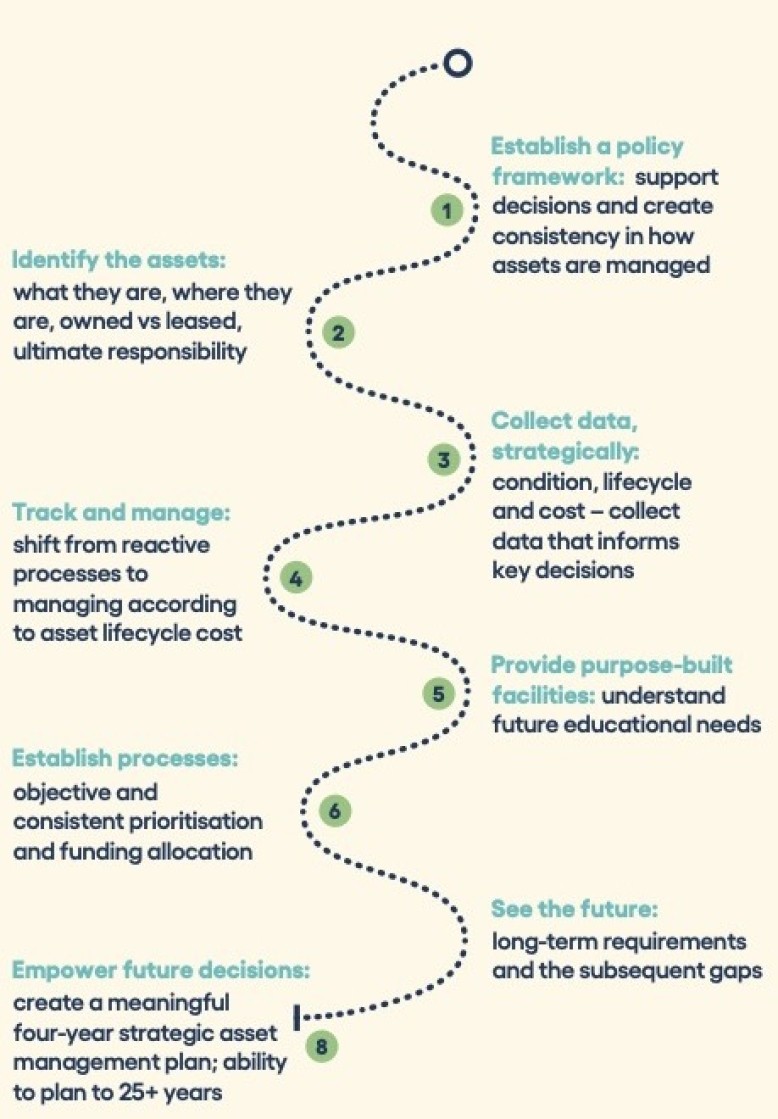The Challenge & Opportunity
The Department of Education (DoE) Tasmania faced a classic asset management challenge; to ensure their portfolio of essential community facilities were maintained and preserved in a manner which ensured future risks to service delivery were managed, costed and mitigated.
- Data improvement was required to objectively identify at-risk assets, ensure funding was obtained and allocate funding appropriately
- Planning was budget-driven, with funding programs dictating services to be delivered
- Executive decision makers needed data-driven strategies to inform investment decisions about the assets for which they were ultimately responsible
- Opportunity to improve clarity, consistency and confidence in processes and ultimately advance asset management maturity
- Evidence-based 25+ year plan required to objectively prove funding needs to State Government
Featured Results
- Meaningful four-year strategic plan in place; ability to plan 25+ years
- Control of the future • Strong position for 2020 COVID-19 stimulus funding
- Successful receipt of additional AUD$16.5mil stimulus funding to date
DoE Tasmania & Brightly
Craig Grace, Asset Management and Planning Coordinator, and the team at DoE partnered with Brightly subject matter experts to ensure the journey’s end goal was in mind, right from the start – true, evidence based management of assets, and an understanding of current and future state to secure critical funding. This strategic mindset helped put usable reporting outputs into the DoE’s hands within a month of data collection completion.
This journey DoE and Brightly undertook involved:

DoE: stimulus ready
The power and flexibility in Brightly’s Predictor platform, coupled with the DoE’s strategic focus, enabled a targeted and efficient approach to data collection and application of that asset information. For example, given provision of education spaces is paramount to DoE all teaching spaces were assessed in granular detail, where administrative spaces at a simple 1-5 overall score per space. This targeted approach was further applied to the management of bathrooms, specifically to ensure safety to students. Bathrooms were assessed for anti-bullying, given that they are traditionally a high-request area for these safety concerns. This extra layer of assessment was essential in presenting a compelling, evidence-based story to the State Department when DoE was asked to submit a COVID-19 stimulus funding submission in early 2020; DoE received additional funding of $16.5MIL over four years.
More Results
- The Department now has a clear picture of the assets they are responsible for, and how their decisions impact the community into the future
- DoE can now provide decision makers with accurate, evidence-based plans, removing political bias from project selection processes
- Lifecycle scenarios enable DoE to optimise investments in education facilities based on current service provision and future utilisation and occupancy
For us building a case for current and future funding was really important; there has never been a better time than now to ensure scarce funding is spent optimally. We now have confidence our data is painting a true picture, and our information is powerful – at the click of a few buttons we can show the decision makers where money is best invested. We have $3 billion plus in assets – our investment in asset systems and data means we are able to meaningfully inform critical decisions about how to manage these assets, at a cost that is a minute percentage of our overall portfolio value.
Craig Grace
Asset Management and Planning Coordinator

Learn more about our Government and Infrastructure solutions.
Results
DoE was asked to submit a COVID-19 stimulus funding submission in early 2020 – received additional funding of $16.5MIL over four years
Vitals
(replacement cost)
• 250+: Schools, Libraries and Child Care
Centres
• $16.5 million: COVID-19 funding in the next
four years
• $179 million: State Government funding over
four years

